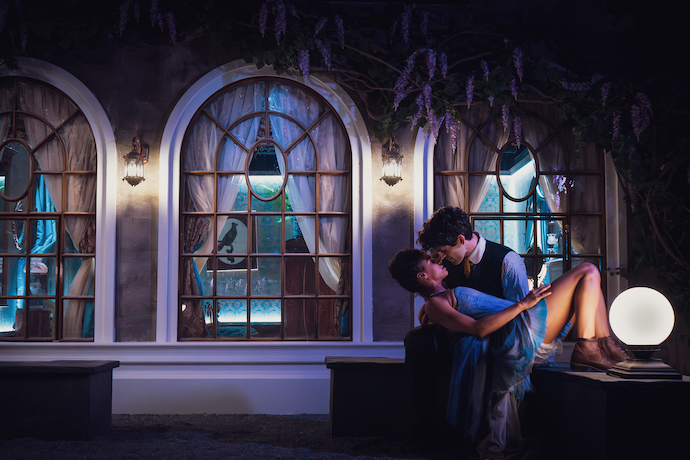
Conwell Tower
New York City
A short walk away from the Wall Street subway station in downtown New York City lies the building that houses Life And Trust, an immersive theatrical experience that explores tensions between old and new values, technologies, and ways of life that emerged in America during the Progressive Era. The production bills itself as a take on the Faust story, but that interpretation is perhaps too generous. There are certainly many deals with devils that happen over the course of the evening, but the outcomes of these deals are mostly left unclear at the individual scale and, ultimately, flattened at the macro level by the show’s climactic and largely symbolic historical ending: the great stock market crash of 1929. In other words, while the artistic vision on display in Life And Trust is certainly cohesive, the execution thereof is not necessarily (or at least not always) coherent.
- Read: Immersive shows in New York | 5 best shows in 2024-25
- Read: Review of Conrad Tao at Carnegie Hall | the pianist plays a futuristic new instrument
Entering the space begins by walking through a winding, narrow hallway lined with mock advertisements for “Life and Trust Bank” leading into a large lobby where guests are informed that the head of this bank, a Mr. Conwell, will see them shortly. Approaching the bar, one becomes captivated with a massive and elaborate art deco mural, scanning it in the hope of finding hints to the story about to unfold. The mural’s main feature is a towering skyscraper whose forced perspective draws the eye up toward its apex, which is crowned with a halo of light approximating one of Gustave Dore’s illustrations for Dante’s Paradiso. Other features include an x-ray machine, blazing factories, and a small broadside advertising “Mephisto.” All-in-all the mural is too busy to take in and recount perfectly, but in retrospect this seems an intentional preparation of the audience for what’s to come.
At the appointed time, we are invited into a masculine-looking study with a freshly signed contract on the desk. We overhear the voices of Mr. Conwell and Mephisto having an argument, in which it is implied that Mephisto gave Conwell the recipe for the addictive “syrup” that made him rich. Mephisto ends this conversation by saying, “Desire is easy. It’s the satisfaction that’s hard.” From there we are instructed to don black masks that cover the entire face (eyeglass wearers beware) and are devoid of features except for eye holes and rabbit-like ears that indicate our place in the narrative will be decidedly non-human. We are told to wear our masks at all times as we are invited into a space where we can interact with episodes from Conwell’s life, not as participants but as “apparitions.”
The space beyond the study is massive, consisting of multiple floors and rooms of all kinds (a chapel, a drugstore, a theatre, a cinema, a bedroom, a jail, and so on) where various scenes between the actors play out. These scenes are entirely wordless, consisting in the interplay of body language, props, and elaborate choreography. Each revolves around one or more human desires: for power, control, ecstasy, relief, love, combat, escape, and memory. Unsurprisingly, then, most of these scenes seem to take on a decidedly erotic aura: every one begins with some sort of contact or engagement and ends with some sort of disengagement or running away. This constant tension between flight and pursuit is mirrored by the audience apparitions, who are compelled to follow whichever characters or storylines lead them on, climbing up and down stairs or running down corridors to see what will happen, occasionally getting lost in the process.
If this all sounds very abstract, it’s only because the almost three-hour experience seems nearly impossible to describe concretely, but believe me when I say the devil is in the details. The sets are deliberate and evocative—a Venus de Milo here, a bust of Byron there—and changes of lighting and music give some indication of where action may be about to happen. Like desire, the audience experience of Life And Trust is rich but punctuated, with spaces between that are often less than satisfying (we have to wonder, of course, whether that is part of the point). One walks away from the daydream feeling bittersweet, having engaged with a production that is just as difficult to critique as it is difficult to praise. But if this or any theatrical work has artistic aspirations and hopes to do more than merely entertain, then maybe a result that is both interesting and confounding at once is not such a bad thing after all. ![]()